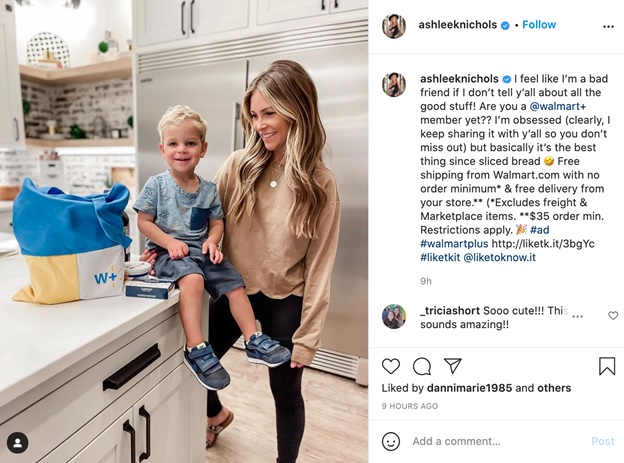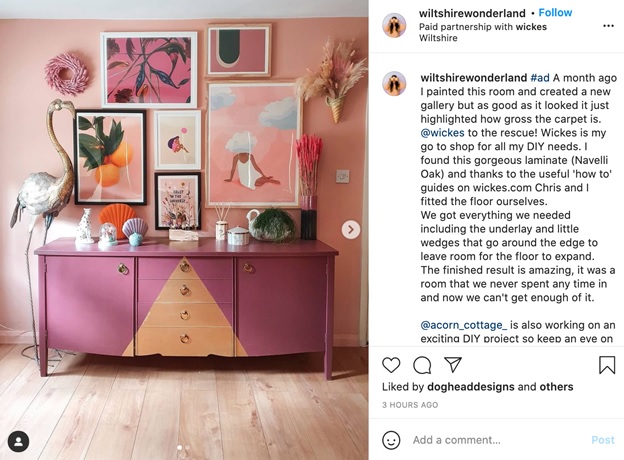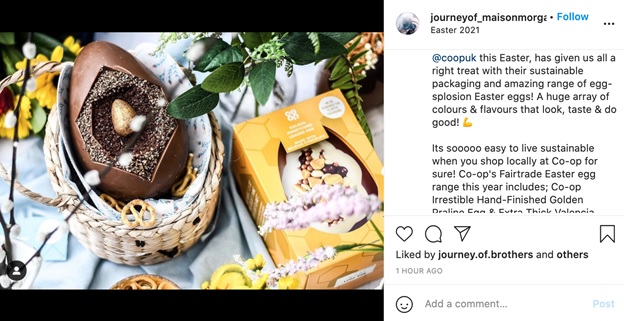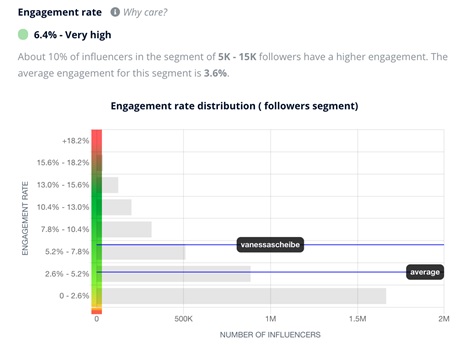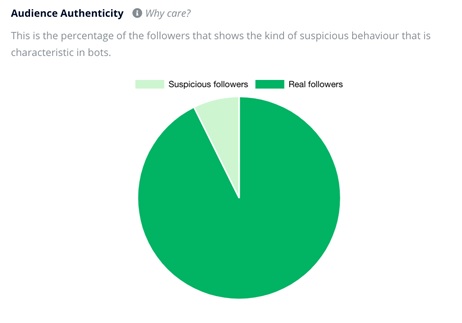Influencers are everywhere these days. From the consequences of the pandemic, even to the time before, social media has totally taken over our lives. It’s no wonder that businesses have quickly adapted to this digital way of living, incorporating new social media marketing strategies such as influencer marketing. The buzz around it is certainly something you can’t miss, but you may be in need of a quick catch-up ahead of pursuing an influencer campaign.
What is influencer marketing?
Influencer marketing has rapidly increased in popularity over the years. It’s not so much of a novel concept anymore, but because of this, brands are needing to become more creative and plan better in order to have a campaign that stands out. These days, there are now even places like this influencer marketing agency that help connect brands with influencers in order to help them boost their online presence and expand their audience.
The influencer marketing industry is worth $13.8 billion, and is only going to continue to grow. With increased social media usage, businesses saw a chance to direct their digital marketing efforts through this channel.
Essentially, influencer marketing is where a brand will ask social media creators and personalities to promote their brand and products. The younger generations are less inclined to be swayed by traditional advertising methods and instead, find influencer marketing to be a more authentic strategy.
We are going to cover the fundamentals of influencer marketing for businesses, so if you’re an influencer, this could definitely still be helpful, but you may also want to check out an article like 10 simple hacks for becoming an Instagram influencer first.
How can influencers help to meet your business goals?
I’m guessing that your business would like to grow bigger and achieve higher sales volumes. Maybe you have slightly different business goals, but whatever they are, I’m sure that you want to succeed. Influencer marketing has become one of the most effective strategies for meeting business goals, due to the incredible return on investment that can be achieved. As well as this, the flexibility of influencer marketing allows for a wide range of desirable goals to be accomplished.
One of the greatest things about influencer marketing is that it can be a very low-cost strategy. Of course, the amount that you spend will depend on the size of your company and your marketing budget. However, this strategy has allowed small businesses and start-ups to meet their needs with very minimal spend. If you’re reading this as a start-up, then it may be helpful to check out this article on 5 things you’re going to need to make your small business grow.
There are five different influencer tiers, from the smallest accounts to the big-name celebrities, meaning that there is an opportunity for every business, no matter your budget. However, you may have noticed that celebrity endorsements are becoming less common, and smaller influencers more popular amongst brands. Keep on reading to find out why follower numbers are really the least important thing!
Understanding the influencer tiers
As mentioned above, there are five tiers within influencer marketing. Depending on how many followers the influencer has, they will fall into one of these tiers. However, at each level, there are notable differences that are vital to consider when planning a campaign.
-
Nano influencers
These influencers have between 1k and 5k followers and are typically at the beginning stages of becoming an influencer. They have most likely started their account from a hobby or passion, spontaneously increasing their followers along the way. They boast incredibly high engagement rates, with an audience that is genuinely interested in their content. These influencers are low cost, generally collaborating for product alone.
-
Micro influencers
This group will have between 5k and 50k followers and have very similar characteristics to nano influencers. These influencers understand their potential and will be eager to turn their social media accounts into a career. Engagement rates are still high, and costs are low. With slightly more expertise than nano influencers, and lower cost than the next tier, this group are in high demand for their obvious benefits.
-
Medium influencers
Medium influencers have between 50k and 100k followers. At this stage, influencers tend to become a lot more professional. Their content improves quality through the use of additional help such as software tools or working with agencies. These influencers will begin to hire managers that will charge fees. The influencers themselves will also be of higher cost than previous tiers.
-
Macro influencers
With somewhere between 100k and 1M followers, this group most likely have a full-time career in social media. Their content is high quality, typically run by a manager or professional agency. Macro influencers are no stranger to brand collaborations, and your product will be of lower perceived value to this group than to those from below tiers. They will additionally be high-cost and more difficult to contact.
-
Mega influencers
Most commonly thought of as celebrities, these influencers will probably be famous for something outside of social media. They may be actors, singers, or sports people, for example. Their content will be well-polished, and their accounts managed by a professional. Although this group has an incredibly large reach, they will charge high amounts for their services. An important thing to note with both mega and macro influencers, is that followers view their promotions as less authentic.
Planning: three key steps
As with any new campaign or marketing strategy, there’s nothing more important than the planning process. This is where you’ve got to be patient, allocating enough time, resources, and labour, to ensure a thorough plan can be conducted.
Step one: your goals
Here, you want to strip right back to the basics. What made you decide to pursue an influencer marketing campaign in the first place? Establishing your key objectives, and what you wish to achieve from this campaign is vital.
Branding is a big one. You may wish to increase brand awareness, to expose your brand to a new location, and to generally get your name out there. Influencers can help to get your brand viewed by not just more consumers, but also a wider variety too.
Content creation is another common goal for marketers. Maybe you don’t have enough time or staff for the amount of content that you aspire to have? Influencers will not only be creating a substantial amount of content for your brand, but you can ask to reshare it too!
Increasing sales will most likely be one of your desired achievements. Influencers can hugely aid this, by encouraging traffic towards your website and driving more sales.
These are, of course, just a few examples. Your goals can totally differ from these, but whatever they are, they must be established at the beginning. Once they have been outlined, they can be translated into key performance indicators (KPIs), which is a way of measuring your campaign success as you go. You should set up a tool where you can track these KPIs, such as through Google Analytics.
Step two: target audience
Next up, you’ll want to make sure that you understand your target audience. Think about it, how much promotional content do you see daily that has no relevance to your interests, therefore you immediately scroll past? So, there’s no use in your content being displayed to the wrong consumer.
To understand the exact qualities of the sort of person that you would like to purchase your products, you should create a user persona. This could be based on your current target audience or could be a new type of consumer that you are wanting to attract.
Within this step, you can begin to determine the best type of influencer to work with, as well as social media channels that are most frequently used by your target consumers. Instagram influencers are most popular with brands due to the platform’s highly visual content however, you may instead find that video content is best suited to your target audience. In this case, you may opt for YouTube or find it interesting to investigate 5 great YouTube alternatives for small businesses.
Step three: budget and timeline
The third step of the early stages of planning is to determine a budget and identify any specific timeline for your campaign. In terms of budget, you’ll need to consider the incentive that you will be able to offer to influencers. But, don’t forget about the price of the product, as well as shipping and handling costs.
To calculate the total investment for the campaign, it’s important to also take into account whether you will pay an agency or not, the number of influencers that you will be paying, and the duration of the campaign.
On the note of duration, begin to outline a timeline. Influencer campaigns often fall within a certain season or date, due to a particular event or festivity. You may also be wanting to push a campaign in line with a sale or promotion. When considering a timeline, remember that influencers have busy schedules and won’t necessarily be immediately available.
Finding influencers
By this stage, your plan should be pretty set and stone. Looking for the perfect influencer can sometimes seem a little daunting. There’s millions of influencers across the globe, from various categories. Many will be great for your brand, but it’s finding a way to make this search most effective that can seem challenging.
A lot of big businesses hire external agencies to do this for them. When working with an agency, they often outsource the whole process of an influencer campaign and can sometimes have fairly little input.
However, if doing this yourself, to find influencers, you can either look directly on Instagram, or use an influencer marketing platform instead. Let’s take a look.
Manually
If you want to search for influencers manually, this is certainly possible, however somewhat time consuming. There’s a few tips that will help to speed up this process for you:
- check your brand’s comments for potential influencers.
- check your brand’s mentions.
- check your brand’s tags.
- check likes too.
By doing this, you can identify any influencers that may already follow your account and are a fan of your brand. There’s nothing more genuine than working with an influencer that has always loved your products anyway!
Influencer Marketing Platform
Alternatively, the most effective and least time-consuming method would be to search through an influencer marketing platform. These platforms have millions of influencers on their systems, from various social media channels, allowing you to search for the exact type of influencer that you are interested in.
Remember all of your planning prior to this stage? Well, this is when it comes in handy. When identifying things like your budget and target audience, you have been pinpointing specific characteristics that will be necessary in an influencer. These can then be identified through dedicated search filters on an influencer marketing platform.
Let’s look at Heepsy to give you an example search. So, you may have decided that you would like to work with a micro influencer, located in Spain, within the fashion category. This is how your search would look:
As you can see, there are many more categories that your search can be specified with. By working with an influencer marketing platform like Heepsy, you can save a lot of time and effort, as you do not need to sieve through thousands of irrelevant influencers yourself. There is the additional issue of facing fake influencers, with as many as 68% of marketers experiencing influencer fraud, according to a survey by Influencer Marketing Hub.
Analysing profiles
Although finding influencers through an influencer marketing platform is extremely beneficial, many small brands will choose to look manually if they are only searching for one or two. And yes, looking for influencers manually may be perfectly effective for one or two. However, the real difference is when it comes to analysing profiles.
This is one of the biggest influencer marketing challenges that marketers face. But to overcome this, platforms like Heepsy are here to help. Artificial intelligence technologies work to attain data that can then be provided as ‘profile insights’ about an influencer’s account. Analysing this data is crucial to ensuring that you are selecting the best influencers for your brand.
Some of the elements provided include engagement rates, follower growth rates, overall quality score, audience demographics and interests, audience authenticity metrics, estimated cost of promotion, and several more! So, let’s go over some of the most important ones to look at.
Engagement rates
A common misconception across social media is that the more followers someone has, the bigger influence they will have. Although technically their reach is far greater, it’s important to remember that this does not equate to better influence.
Engagement rates are one of the best ways to establish the quality of an influencer’s profile, and how successful they may be at promoting your brand. This essentially shows the interaction between an influencer and their followers, with high engagement rates being desirable, showing that followers have a genuine interest in the content.
The best way to think of this, is that you would rather have your brand promoted to a smaller group of highly interested people, than a larger group that will quickly scroll right past the post.
Audience insights
Something that is vastly overlooked within influencer marketing is distinguishing between the demographic of the influencer, and that of their audience. You may automatically assume that hiring a 21-year-old Spanish influencer is best for your brand trying to grow across Spain. But what if their audience is primarily located in South America, where your brand doesn’t operate?
Looking at the demographics of an influencer’s audience such as location, language, age, and gender, as well as paying attention to their interests too, will guarantee that you are advertising to the correct group of consumers.
If you are already working with influencers, then be sure to check out these metrics before commencing with a new campaign. You may be aiming to reach a different target audience, which their followers don’t directly fall in line with.
Audience authenticity metrics
As previously mentioned, influencer fraud is a real problem that marketers are facing on a daily basis. It’s challenging to overcome this on your own, but with the help of audience authenticity metrics from Heepsy, you can make sure to sieve out any fake influencers.
AI data detects unusual behaviour from influencer profiles and from their followers to provide you with a percentage of suspected suspicious followers. This could be due to buying followers, conducting a follow/unfollow technique, or other similar strategies to gain followers.
You can also see an overall quality score which will analyse not only follower behaviour, but every metric included in an influencer profile. This will give you a number out of 100 to indicate how good an influencer’s profile is compared to an average for that group.
Conclusion
Hopefully, by reading this far you will now have a better understanding about the basic’s elements of an influencer marketing campaign. By keeping all of these points in mind and ensuring that you set aside enough time and resources to carefully plan, then your campaign will be off to a great start.
The next step is to understand how to measure success of influencer marketing campaigns. Ideally, this research will also be conducted prior to commencing, as you will need to have measuring tools set up. There’s plenty more information at Heepsy that I’d suggest checking out before you begin!
